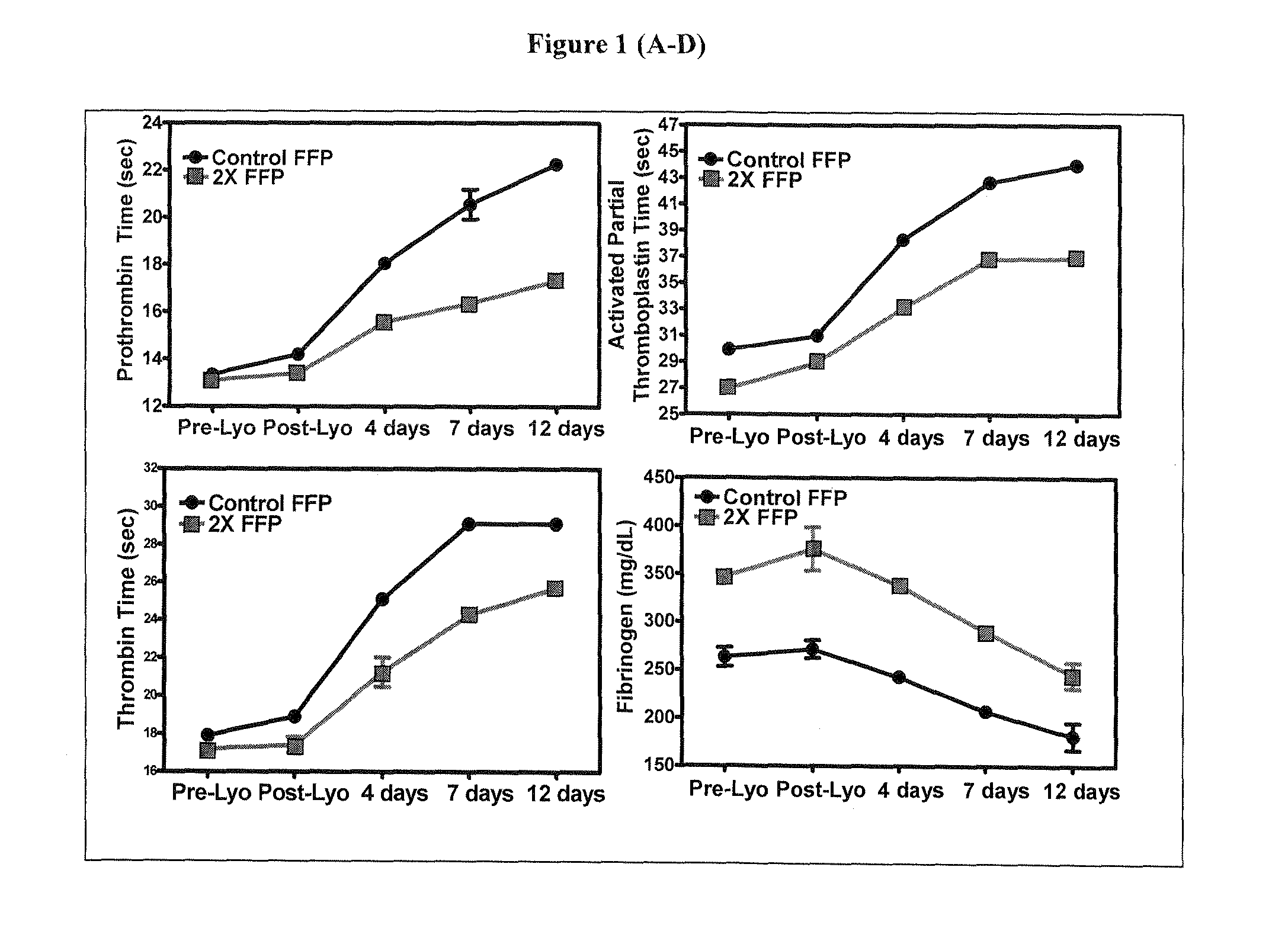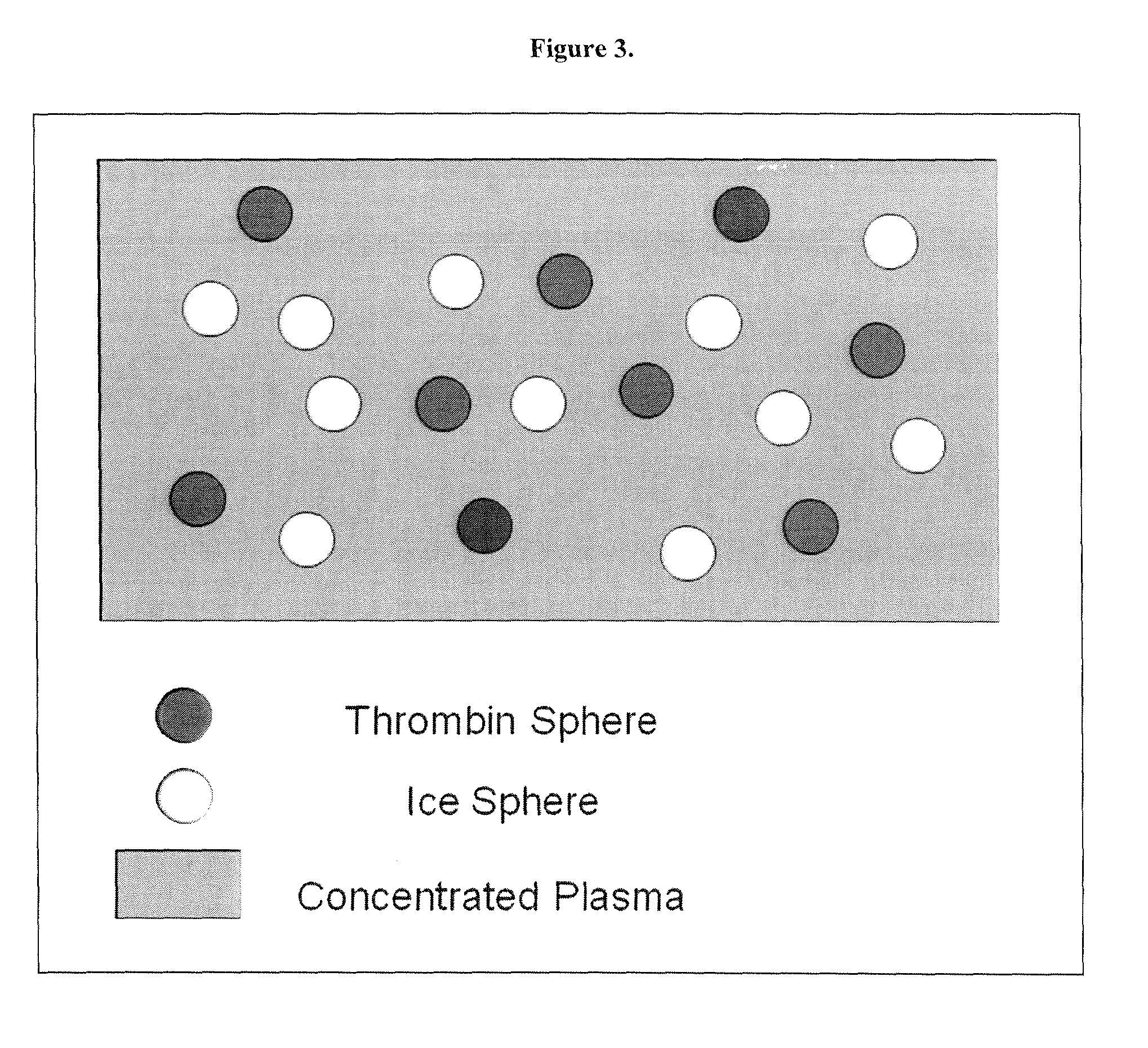Freeze-dried plasma formats for the trauma care field
a technology of freeze-dried plasma and trauma care, which is applied in the field of freeze-dried plasma formats for trauma care, can solve the problems of reducing the availability of frozen plasma in the field, reducing the number of ffp units transshipped, and reducing the time of intact plasma units, so as to increase the total plasma protein concentration, increase the stability of coagulation factor, and increase the effect of coagulation factor stability
- Summary
- Abstract
- Description
- Claims
- Application Information
AI Technical Summary
Benefits of technology
Problems solved by technology
Method used
Image
Examples
example 1
[0029]Plasma protein fraction was up-concentrated, glucose content was reduced, and stabilizing compositions of glutamine dipeptides, or combinations of glutamine dipeptides with glutamine, or glycine were added at the final concentrations indicated in Tables 2-10. Plasma was freeze-dried. The freeze-dried samples were subjected to a high dose gamma irradiation (50 kGy) and consequent heat treatment for 7 days at 45° C. Plasma coagulation properties, pH, osmolality, and residual moisture were determined as described in the text. Data are presented in Tables 2-10.
example 2
[0030]Plasma was supplemented with Asparagine, Glutamine, Glycine, Bicine, or combinations of thereof, at the final concentrations indicated in Tables 12-14. Plasma was freeze-dried. The freeze-dried samples were subjected to heat treatment for 8 days at 40° C. Plasma coagulation properties, pH, osmolality, and residual moisture were determined as described in the text. Data are presented in Tables 12-14.
example 3
[0031]Plasma was supplemented with 60 mM Glycine or a combination of 40 mM Glycine plus 20 mM GlycineAmide and freeze-dried. The freeze-dried samples were subjected to heat treatment for 4 days at 45° C. Plasma coagulation properties, pH, osmolality, and residual moisture were determined as described in the text. Data are presented in Tables 15-20. A combination of 40 mM Glycine plus 20 mM GlycineAmide (a total of 60 mM) shows increased capacity to stabilize freeze-dried plasma compared to 60 mM Glycine alone. Data are presented in Tables 15-20.
General Methodology
[0032]1. Plasma Sources: 1. Fresh frozen plasma (FFP) with up-concentrated protein fraction. 2. Platelet poor plasma (PPP) with up-concentrated platelet particle content.
3. PPP with up-concentrated platelet particle content and up-concentrated protein fraction.
[0033]The three plasma sources are produced by circulating plasma through a Spectrum hollow fiber filtration system. Specifically, FFP with up-concentrated protein fr...
PUM
| Property | Measurement | Unit |
|---|---|---|
| concentration | aaaaa | aaaaa |
| concentration | aaaaa | aaaaa |
| concentration | aaaaa | aaaaa |
Abstract
Description
Claims
Application Information
 Login to View More
Login to View More - R&D
- Intellectual Property
- Life Sciences
- Materials
- Tech Scout
- Unparalleled Data Quality
- Higher Quality Content
- 60% Fewer Hallucinations
Browse by: Latest US Patents, China's latest patents, Technical Efficacy Thesaurus, Application Domain, Technology Topic, Popular Technical Reports.
© 2025 PatSnap. All rights reserved.Legal|Privacy policy|Modern Slavery Act Transparency Statement|Sitemap|About US| Contact US: help@patsnap.com



